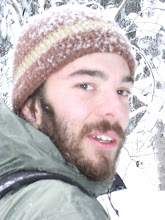

Finally the weekend arrived free of rain on the heels of a week and a half of gleaming sun. We could finally try for the mountains that had long been under feet of snow. Our first attempt were the Norton Lakes in the seldom visited and little known Smoky Mountains of Idaho. At the trailhead were several cars - packed for Idaho. But as we made our way up the canyon and to the first of the lakes we found the end of the trail for most everyone else.
 A coin toss was made at the second lake. Heads we skirt a low ridge to make a short loop of the hike - tails we climb another 15oo feet, reach a high scree bound ridge and climb south to Big Lost Lake which we should be able to see some distance below. Tails it was. Our reward consisted of 360 degree views of the mountains, lakes and sky.
A coin toss was made at the second lake. Heads we skirt a low ridge to make a short loop of the hike - tails we climb another 15oo feet, reach a high scree bound ridge and climb south to Big Lost Lake which we should be able to see some distance below. Tails it was. Our reward consisted of 360 degree views of the mountains, lakes and sky.




On Sunday, Kyung and Dan, pictured above, headed north to the Sawtooth mountains to climb. I opted for a version (there are many) of the Pioneer Cabin loop, a "classic" says my guidebook. The first five miles were a grueling slog straight up Long gulch. But I faced the below image most of the way, easing the burden.

Just at the moment of releif I dropped into the above valley and had to climb another 1000+ feet to a low saddle where the Pioneer Mountains stood in awesome formation.

Hyndman Peak, the tallest in the Pioneers.
 The cabin is a relic from the days when nordic skiers would use it as a base camp. I cannot think of any better placement.
The cabin is a relic from the days when nordic skiers would use it as a base camp. I cannot think of any better placement.








































